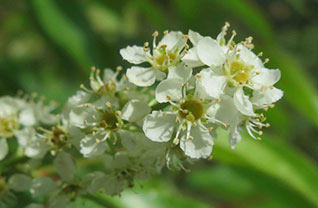Featured BIOSPEX Project
Ant Plants of Virginia

Contact
Organization
Partners
South East Regional Network of Expertise and Collections (SERNEC).
Funding Source
National Science Foundation #EF-1410086, “Digitization TCN: Collaborative Research: The Key to the Cabinets: Building and sustaining a research database for a global biodiversity hotspot.” and the Virginia Native Plant Society.
Description
Ants are essential to the life of over 11,000 plant species worldwide. Help us learn more about this remarkable partnership in Virginia.
The forests of eastern North America are a global hotspot for a remarkable ecological interaction: myrmecochory or ant-based seed dispersal. Over thirty genera of plants native to this region rely on ants to distribute their seeds. These plants produce a specialized food reward on their seeds, called an elaiosome, that is consumed by ants once they return to their nest with the harvested seeds (see photo inset – elaiosome-bearing seed of bloodroot; credit, Alex Wild). Afterwards, ants discard the undamaged seeds in underground waste-pits or by their nest’s entrance, where germination conditions are ideal. Consequently, distributions of many native plant species, including some of Virginia’s most recognizable wildflowers such as bloodroot, trout lily and spring beauty, are governed by ants. Help us learn more about the diversity and distribution of this remarkable ecological interaction while expanding your knowledge of the many ant-plants that call Virginia home.
Incentives
Geographic Scope
The Commonwealth of Virginia, USA
Taxonomic Scope
Vascular plants
Temporal Scope
1880's to present
Language Skills Required
English




